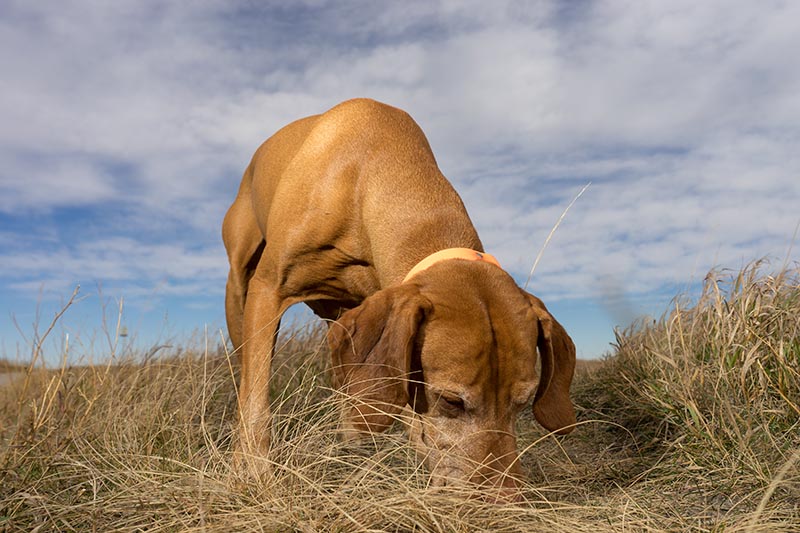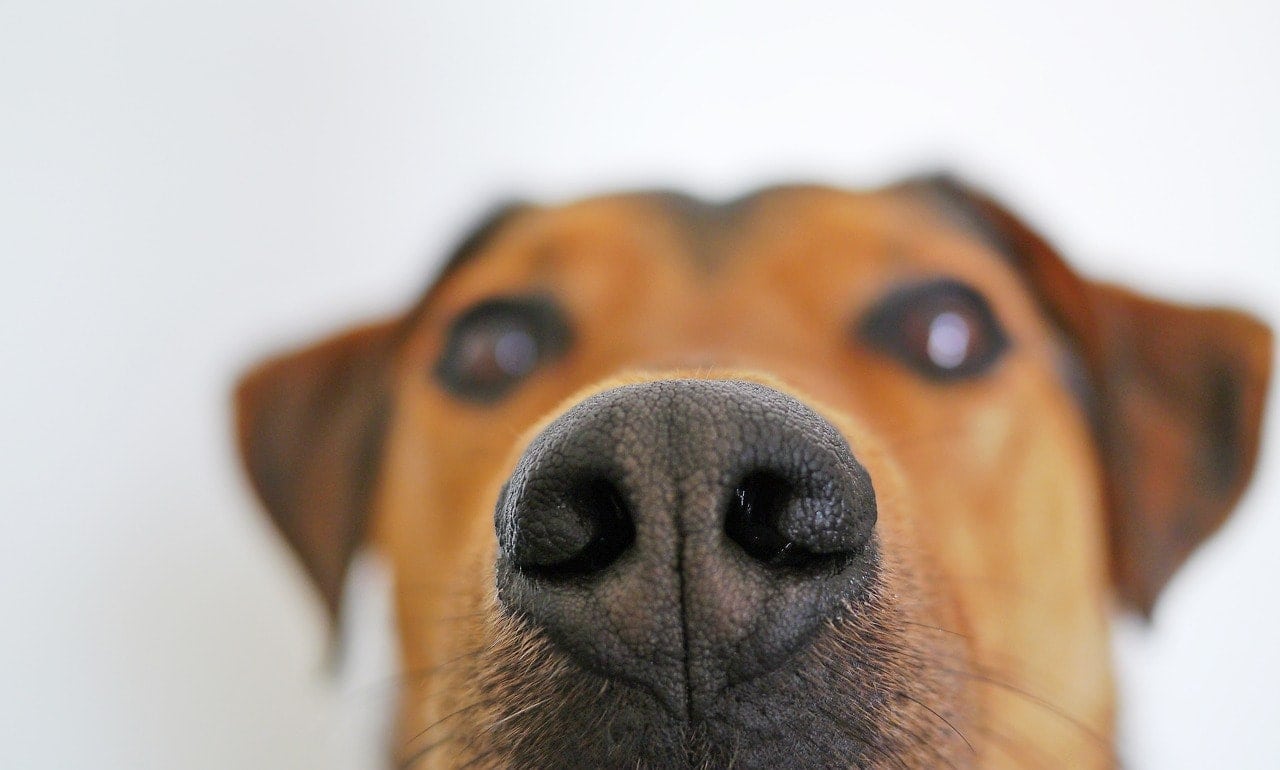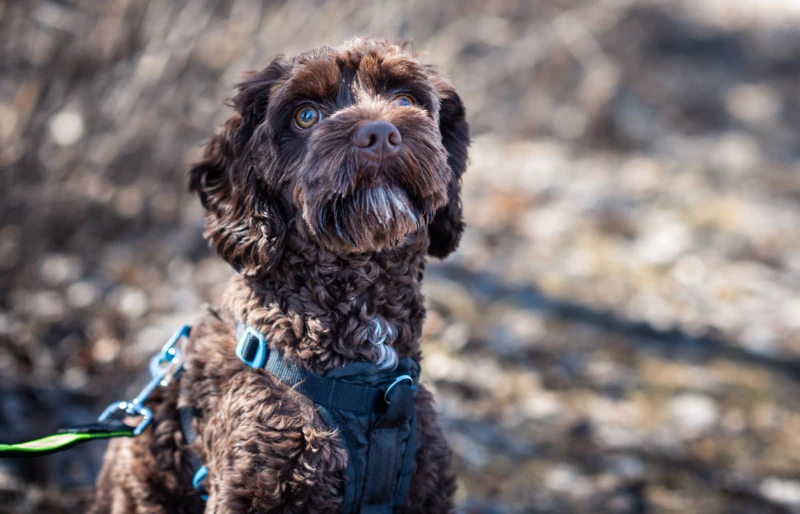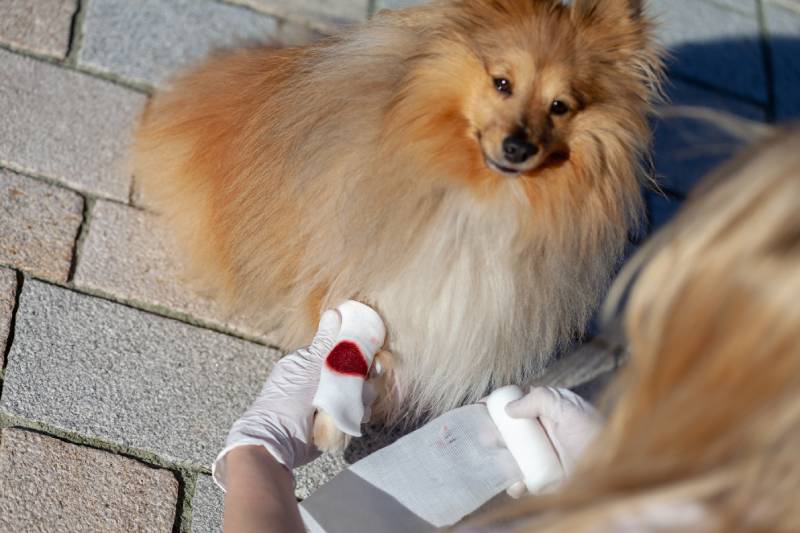How Far Underground Can a Dog Smell? Surprising Answer!
Updated on

Any dog owner knows how much time their dogs invest in sniffing, but not everyone understands just how amazing a dog’s sense of smell actually is! Just how good are dogs at sniffing things out?
It might surprise you to learn that dogs have been known to detect odors up to 40 feet underground!
Here, we dive into more about how the dog’s nose works and what factors can impact their sense of smell.
How Does a Dog’s Nose Work?
The dog’s sense of smell is about 40 times stronger than ours, which means they can smell up to 100,000 better than us!1 They have 300 million olfactory receptors in their noses, compared to humans’ 6 million.
The olfactory receptors in a dog’s nose can be as large as a handkerchief, depending on the dog’s size.2 To put that in perspective, our olfactory receptors are about the size of a stamp.

Inhaling and Exhaling
When we inhale through our nose, the scents and air that we’ve breathed go through the same airway. But when dogs inhale, there’s a fold of tissue just inside the nostrils that separates the scents and the air. This enables them to breathe while a portion of the air is split into their olfactory receptors.
When we exhale, the air goes out the way that it came in, but when dogs exhale, the air, combined with odors, exits through those little notches on the sides of their nostrils.
The exiting air circles around and enables new odors to enter the nose. What this means is dogs have the capability to sniff continuously — essentially, dogs can breathe in and out at the same time.
Smelling in 3D
Each nostril of a dog’s nose can smell individually, which essentially gives them a 3D image. The odors that enter the nostrils help dogs figure out where the scents come from. This is why dogs are so good at detecting things from far away.
In fact, dogs can determine how old a scent is by how concentrated the odor molecules are. They can tell where an animal or person has been and where they currently are. Some dogs can even sniff out a fingerprint from a glass slide when left outside for 24 hours in the rain!
Vomeronasal Organ
Dogs have something called the vomeronasal organ, also known as Jacobson’s organ, which essentially gives them a second sense of smell. The organ is located on the roof of the mouth behind the incisors and inside the nasal cavity.
It is capable of detecting chemical scents — more specifically, pheromones — from other animals. This chemical communication assists them as adults with mating and as puppies to find their mother.
How Far Can a Dog Smell Underground?
Dogs can smell as far as 40 feet deep underground. In the working world, dogs that need to smell for things underground are cadaver dogs, also known as human remains detection dogs. The most common breeds used for this kind of work are Labrador Retrievers, Malinois, and German Shepherds.
These dogs are trained to sniff out human remains in all kinds of environments, including underground. However, how well they detect a scent depends on a few factors, such as how aerated the soil is and what kind. For example, sandy soil is much less dense than clay soil, so sandy soil will be easier for dogs to detect odors.
Furthermore, if the remains are wrapped in plastic, the weather (including the temperature), and the stage of decomposition all play a role in how easily a dog can find body remains. Still, they have the ability to locate blood, bone, tissue, and body parts, and they can tell the difference between a dead squirrel and a dead person by scent alone.
They can also smell remains located underwater, up to almost 100 feet down!
How Far Can a Dog Smell Above Ground?
Scents can travel above ground quite far. With the right conditions, like wind direction and the type of sought-after scent, dogs can smell people or objects as far away as 20 kilometers!
Common working dogs that use their noses (other than cadaver dogs) are search-and-rescue dogs and bomb-sniffing dogs, as well as those that detect drugs and illegal imports at airports.
Dogs can follow a scent up to 14 days old, though scent trails typically last up to 72 hours. Some dogs have been known to follow scent trails up to 130 miles! There are also dogs that travel for miles just to find their way home. That was the case for Bobbie the Wonder Dog. In 1924, he walked about 2,800 miles home after he was lost during a car trip to Indiana!

What Dog Breeds Have the Greatest Sense of Smell?
Some dog breeds have better senses of smell than others. Flat-faced dogs, like Pugs, can’t smell nearly as well as most other breeds because their nasal passages are so short.
- Bloodhounds have the most scent receptors at 300 million. Considering how famous these dogs are for their tracking skills, it should come as no surprise that they have the best sense of smell.
- Bassett Hounds are similar to Bloodhounds because they are both hounds and have long drooping ears, which are thought to aid in catching particular scents.
- Black and Tan Coonhounds have long ears and an excellent sense of smell.
- German Shepherds have approximately 225 million scent receptors. Unlike hounds, they are talented at catching scents in the air rather than on the ground.
- Beagles are known for their tracking abilities. They are commonly used in airports to detect contraband in customs.
- Pointers are favorites among hunters for scenting prey with incredible accuracy. They will also “point out” the game.
- Labrador Retrievers are hunting dogs but are commonly used to locate bombs and drugs. They also assist doctors by detecting patients with low blood sugar levels and cancer.
- Golden Retrievers excel at finding food, even when in airtight containers. They can help people with food allergies, like peanuts, be aware when allergens are close by.
- Belgian Malinois make excellent cadaver dogs, and they are also used to sniff out drugs and bombs.
Conclusion
Considering that 40% of a dog’s brain is dedicated to scent identification, it’s no wonder that they have such incredible talent in the smelling department.
They can smell up to 40 feet into the earth and even 100 feet underwater. Even cement isn’t immune to dogs picking up a scent!
All that sniffing that your dog does while out on their daily walk gives them a huge amount of information. So, let them sniff away!
See Also:
Featured Image Credit: Barna Tanko, Shutterstock











